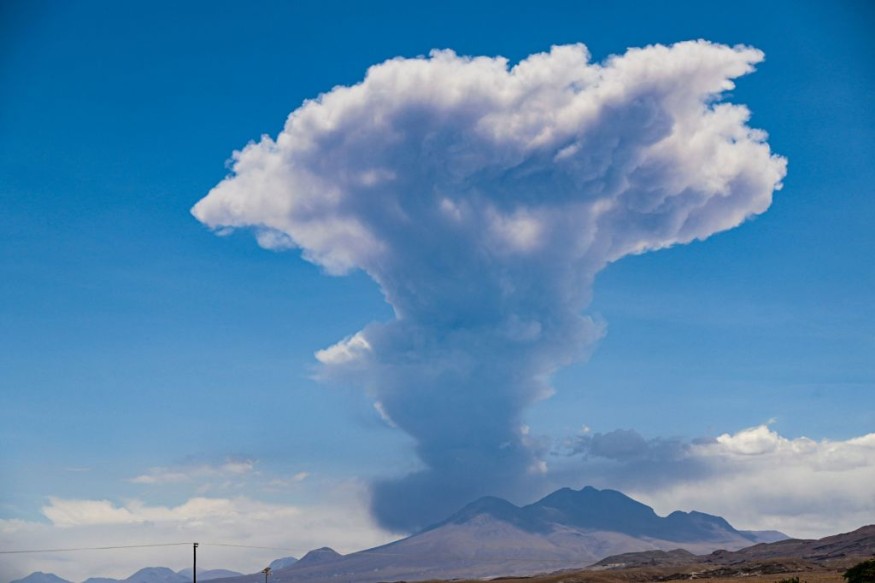Lascar volcano in Chile is showing signs of increased seismic activity, raising fears of a potential volcanic eruption in the short-term period.
Amid the volcano threat, Chilean authorities have issued an "orange alert" from a yellow level, which marks the elevated threat posed by the volcano.
The authorities also set up a danger or exclusion zone from the crater, as a means to protect nearby population and towns.
Lascar is a stratovolcano, also called as a composite volcano, which means that it is a conical shape volcano consisting of many layers of hardened lava.
Its outer structure is also a result of other volcanic material piled up together as a result of multiple eruptions.
The said Chilean volcano sits in the Central Volcanic Zone of the Andes mountain range, which spans from Argentina, Bolivia, Peru, and Chile.
Lascar Volcano Threat

Chilean officials on Saturday, January 28, raised the alert level from yellow to orange to increase restrictions and access to the area around Lascar volcano, which lies near the Bolivian border which is a remote area but is one of northern Chile's most seismically active regions, the Borneo Bulletin reported.
Chile's National Geology and Mining Service raised the volcano alarm level of Lascar due to "an increase in seismicity," as cited by the Brunei-based English-language newspaper.
Amid the heightened seismic activity, the Chilean geological agency predicted volcanic hazards like "eruptive pules" with heights exceeding 5 kilometers.
In addition, ash and pumice will spread in a wide area.
Exclusion Zone
YouTube channel GeologyHub also said in its video report that the Lascar volcano is set for a new eruption, resulting in the issuance of the said exclusion zone to a radius of 10 kilometers or slightly over 6 miles.
This is in reference to the recently active summit vent which also erupted in December 2022.
Lascar showed heightened seismicity on December 10 last year, which prompted the country's seismic authorities at that time to issue the yellow alert level and to warn the public to stay away at least 5 kilometers from the crater, according to the Global Volcanism Program of the Smithsonian Institution.
The Chilean government agency National Office of Emergency of the Interior Ministry (ONEMI) maintained the alert level, which is part of a three-tier scale.
While the yellow scale means there is a volcanic threat present since eruption is possible, orange and red alert levels are leaning towards an imminent eruption.
Pacific Ring of Fire
The locally-active seismic area of Chile also sits within the Pacific Ring of Fire, a horse-shoe shaped region in the Pacific Ocean.
Seismology experts consider the region as a hotspot for earthquakes and volcanic eruptions.
This means that countries and territories within this seismic ring could experience a recurrence of these natural disasters.
In Chile, there have been a total of 20 significant eruptions among the nine active volcanoes in the country over the past 200 years, according to the online database Worlddata.info.
The South American country's worst volcanic eruption occurred in 1949, dubbed as the "eruption of Villarica," where 54 people died.
Related Article: Mauna Loa, Hawaii's Biggest Volcano, is Currently in an Active Phase
© 2025 NatureWorldNews.com All rights reserved. Do not reproduce without permission.





